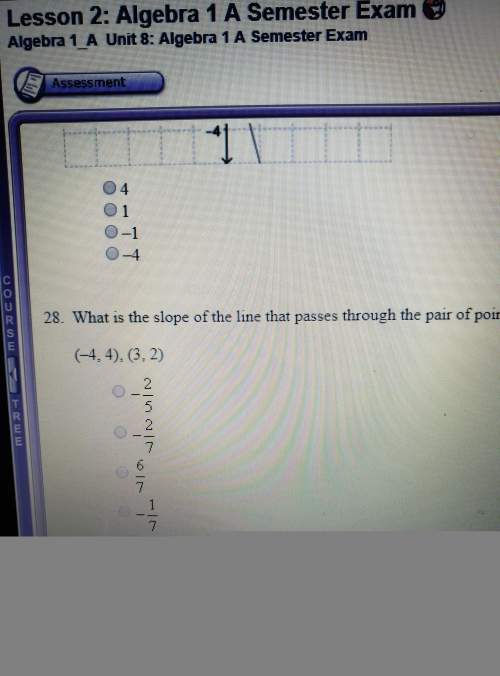
Mathematics, 02.04.2020 20:01 AlicR63701
Triangle ABC has vertices at A(−3, 4), B(4, −2), C(8, 3). The triangle translates 4 units right and 3 units down. Which rule represents the translation? After the translation, what are the coordinates of vertex A? A) (x, y) → ( x + 4, y + 3); (1, 7) B) (x, y) → (x + 4, y − 3); A(1, 1) Eliminate C) (x, y) → (x − 4, y + 3); (−7, 1) D) (x, y) → (x − 4, y − 3); A(1, −1)

Answers: 1


Other questions on the subject: Mathematics

Mathematics, 21.06.2019 14:10, jessicapbailey52
Which linear equations have an infinite number of solutions? check all that apply. (x – 3/7) = 2/7(3/2x – 9/14)8(x + 2) = 5x – 1412.3x – 18 = 3(–6 + 4.1x)(6x + 10) = 7(x – 2)4.2x – 3.5 = 2.1 (5x + 8)
Answers: 3



Mathematics, 21.06.2019 22:00, dest8860
Which sum or difference identity would you use to verify that cos (180° - q) = -cos q? a.) sin (a -b) = sin a cos b – cos a sin b b.) cos (a -b) = cos a cos b – sin a sin b c.) cos (a -b) = cos a cosb + sin a sin b d.) sin (a + b) = sin a cos b + cos a sin b
Answers: 1
You know the right answer?
Triangle ABC has vertices at A(−3, 4), B(4, −2), C(8, 3). The triangle translates 4 units right and...
Questions in other subjects:

History, 31.03.2020 00:22





Biology, 31.03.2020 00:22

Mathematics, 31.03.2020 00:22

History, 31.03.2020 00:22





